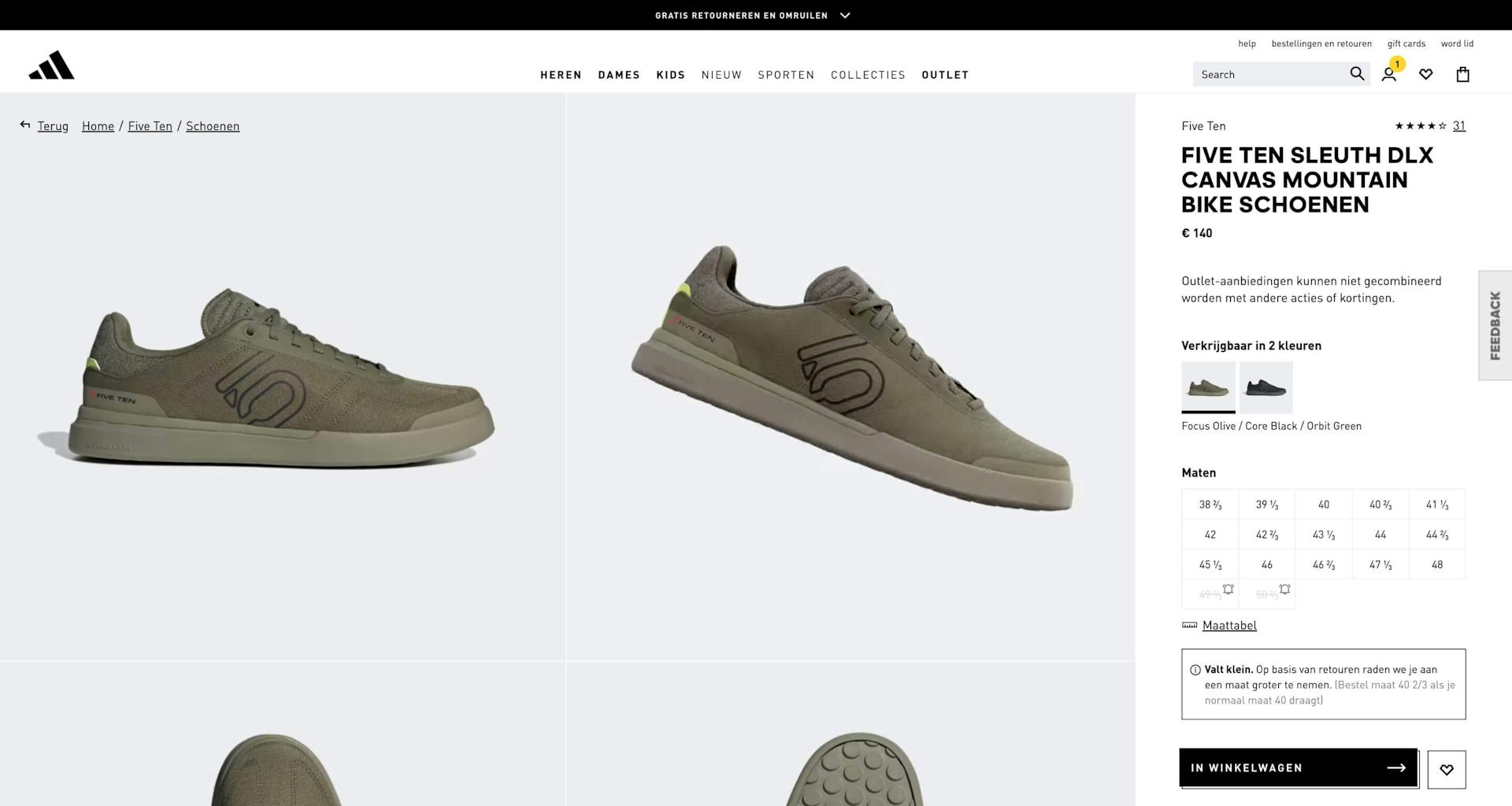Reduce returns, help customers make a good purchase
Returns don't make anyone happy. They are unfortunately an unavoidable part of running an e-commerce platform. A high return rate can have a significant impact on your organization's profit margins and operational efficiency. But the burden on the environment is not insignificant either, and this is becoming an increasing problem. This opinion is also shared by consumers (increasingly).
Research by GfK, commissioned by ShoppingTomorrow, shows that about half of consumers (51%) see returns as a social problem. In other words, it is a problem for all of us. Time to do something about it.
Preventing all returns is impossible, but with certain adjustments in the return policy and in the e-commerce platform, they can certainly be reduced. Help your visitors make a good purchase decision and the number of returns will naturally decrease. How to do this? This article will give you the right insights and help you get started:
- Do you already have the right data insight around your returns? The first step of return optimization starts with insight. Find out the reasons for your returns by looking closely at the available data. Then start the follow-up actions.
- How complete is your product information? Invest in accurate product data, including size, quality supported with good photos and videos. Clear descriptions help customers make informed choices.
- Are you already making optimal use of customer reviews? Use them to identify areas for improvement (instructive!) and to fill in missing information.
- Are you involving your team members enough? Consult different departments within your organization to understand reasons for returns.
- Is your product offering personalized? Offer personalized recommendations to help customers make targeted purchases.
- Assist visitors in real-time? Implement real-time customer service to prevent mis-purchases and build trust.
- How customer-centric is your return policy? Extend return periods and communicate a customer-centric return policy to reduce returns and increase conversions.
Create insight into your return data
Understanding your return data is the first step in getting started with return optimization. By combining your available data of products, orders and returns, you'll uncover valuable insights. How many sales come back? How many orders come back (partially)? How many products are returned relative to the number of products shipped? What are the return costs? How do costs relate to margins on the order and/or products?
Next, start follow-up actions. Did a customer order multiple sizes of the same item? Then a return is a logical consequence. If a visitor adds multiple sizes to the shopping cart, real-time assist is a good option. Has a new product come online and its return rate is a lot higher than average? If so, look at the product information. More concrete sizing advice based on returns is also a possibility. Is a product receiving many returns and are margins under pressure as a result? Then consider excluding these products in advertising. In short: leverage data insights to reduce your returns.
Ensure good product information
It is crucial for e-commerce platforms to invest in comprehensive and accurate product information. Several studies have shown that incorrect size or fit (70%), quality (31%) and look and feel (30%) are the main reasons for returns.
With complete and accurate product information (dimensions, materials, technical specifications) you can reduce the number of returns. With clear descriptions you help visitors make informed choices. Essential for a good product detail page. For example, in the fashion industry, a clear size chart can help customers choose the right clothing size.
Want to go one step further? On the product detail page, explain how an item falls. Does it fall big, small or normal? Determine your recommendation based on the returns you have received, giving an example. See how Adidas does this here:

Current stock status
Also manage expectations around a product's availability to avoid disappointment. When visitors have insight into the current stock status (of both online and in-store inventory), they can make a better buying decision. Suppose a visitor needs your product within two days for a specific occasion. Then availability is critical. Will it take longer than two days? Then the visitor can look for an alternative.
The importance of photos and videos
Within your e-commerce platform, quality photos and videos make all the difference. Especially within the fashion and retail industry. Suppose you are looking online for a new pair of sunglasses. Then the pictures and possible videos accompanying sunglasses are very important. You want to look at the glasses from different angles. What type of model is wearing the glasses? What is the shape of the face, hair color, etc.? Is this customizable to a model that has the same characteristics as you? Or even better, is there the option to upload a photo of yourself and place the glasses over that?
Another example comes from a project with our client Sfeer.nl. The product detail pages proved to be a bottleneck in the customer journey. Using the Hotjar tool, we set up an on-page survey to find out why visitors dropped out. The results showed that consumers experienced a lack of clarity about product dimensions and a lack of detailed photos, among other things, which deterred them from purchasing. Through various optimizations, the add-to-cart ratio increased by 9.8% and the conversion rate from the product pages increased by 12.8%. Customers are thus more likely to make a purchase. Thanks in part to clear product photos. Read more in the Sfeer.nl customer case.
The more detailed and realistic the images and videos are, the better the visitor understands what he or she is purchasing. This automatically leads to fewer returns.

Learn from customer reviews
Customer reviews give visitors a realistic and reliable picture of a product. Valuable information for future buyers, contributing to a sense of trust. Within the travel industry, customer reviews have been used successfully for some time.
Are you already getting (enough) insights from reviews? Take a close look at the reviews and see if you can spot possible areas of improvement. What tips do you get? What often goes wrong? What did the customer miss in their purchase (process)? Complete this missing information.
Proactive approach
You can also take this a step further. Namely a proactive approach regarding customer feedback. Engage with your customer (remember the earlier example of Sfeer.nl). Listen actively and take tips and complaints seriously. Don't simply limit yourself to soliciting a customer review, but approach your customer from within. You will undoubtedly get valuable information, which you can use to increase the overall shopping experience in your e-commerce platform.
Don't forget your team members
Your customers are important, but don't underestimate the value of your employees. Engage in the conversation internally. Be sure to consult different disciplines in the organization when improving your product information. Find out why customers return products, using the experiences and feedback of other people in the company. You'll discover that customer service probably has a wealth of knowledge.
Do you also have physical stores? Are products returned there, from the e-commerce platform? Engage with the team from the store or consider a brainstorming session. The people from the store can give you valuable customer insights. What do in-store visitors care about? What information do they need? What advice do they like? The store staff will no doubt have valuable information about this.
A project like this is currently underway at Eijerkamp, where we are working closely with store employees and interior designers. Together with them, we are providing insight into the feedback they receive in the store. We will then incorporate these insights into the product data to further optimize the e-commerce platform. This is going to help visitors make faster decisions and improve their shopping experience.
A personalized offer helps customers have a more targeted purchase and enjoyable experience in the e-commerce platform. With the use of personalization tools, you collect and analyze customer behavior from different sources, allowing you to make targeted recommendations. Or show surprising combinations, with which you can help the customer. As a fashion retailer, you can help visitors with styling advice in this way.
With a well-executed personalization strategy, there is a lower chance of returns and higher customer satisfaction. Customers are more satisfied when they receive products that actually meet their needs and expectations.
Real-time assistance
It stands to reason that a well-trained customer service team can significantly reduce the number of returns. Make sure real-time assistance is available when visitors get stuck in your webshop.
Consumers are increasingly looking for immediate answers, and by fulfilling this need (proactively) with the right support at the time (e.g. via chat), you can prevent wrong purchases. The right knowledge and expertise in the field in customer service is essential; it not only gives the customer a sense of trust but also provides clarity.
This approach goes beyond simply answering questions; it creates a streamlined shopping experience that matches the customer's personal needs. This allows for an even more targeted(er) offering of products and recommendations to meet customer needs.
Customer-oriented return policy
Longer return periods lead to fewer returns and higher conversion! Consumers buy more often if the return period is extended. Just over a quarter of Dutch online shoppers say they will not order from an online shop if the return period is shorter than 30 days. So it is important to give your customers enough time to return their items to reduce the number of returns. Our client Lucardi even uses a return period of 60 days.
Offer a customer-centric return policy, as 86% of Dutch consumers read the return policy before buying something. When the order is returned, in almost 8 out of 10 consumers the shipping and return policy influences the decision whether or not to buy from you again. So of great importance!

Satisfied customers and a sustainable future
Reducing returns may be a shared responsibility, but as a webshop owner, you have tools in your hands to address this effectively. Creating and leveraging data insights, comprehensive product information, visual aids, customer reviews and personalization tools are all elements that contribute to better informed and satisfied customers. These aspects not only improve the shopping experience, they also reduce returns.
An e-commerce organization that invests in these aspects is an organization that invests in satisfied customers as well as a more sustainable future.

